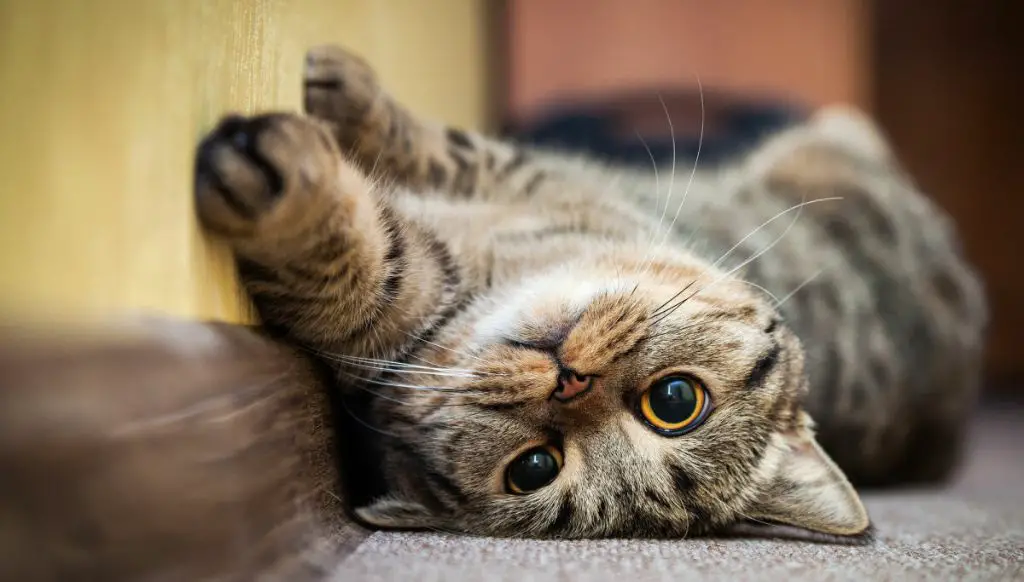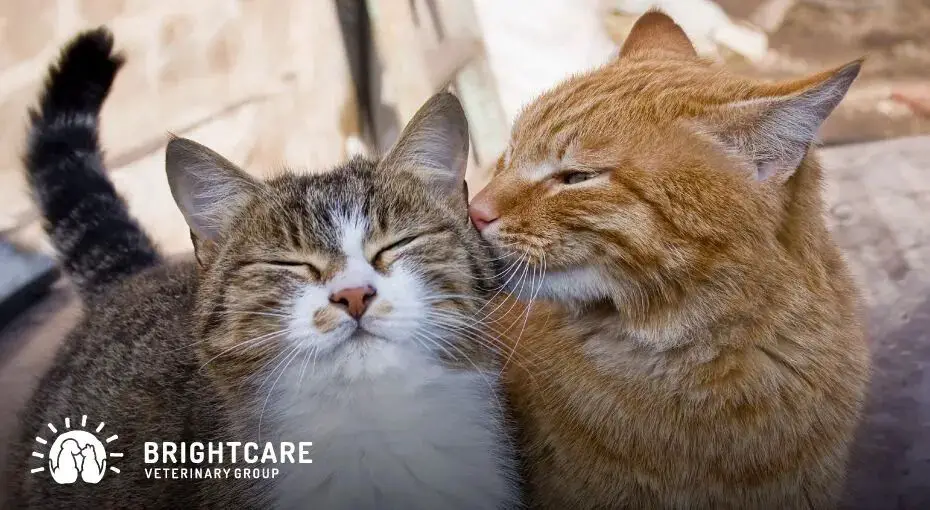Cats are fascinating creatures that have captured the hearts of humans for thousands of years. Though they cannot speak our language, they have developed a complex set of vocalizations and body language to communicate their needs and desires.
One of the most distinctive cat vocalizations that frequently captures our attention is the meow. Meowing is often associated with cats communicating with humans, but is it true that cats only meow at people? In this article, we will explore the mysteries behind feline vocalizations and examine the nuances of cat communication.
Meowing and Humans

Cats developed meowing specifically as a way to communicate with humans. According to research from Livescience, meowing is not a behavior cats exhibit much with other cats. Kittens meow to their mothers, but adults typically only meow during mating. With humans, however, cats of all ages meow frequently.
This is likely because cats learned over time that meowing gets human attention. The sound mimics a human baby’s cry, which pulls at human instincts to nurture and care for the helpless. According to The Conservation Cub Club, meowing provokes a caregiving response in humans, who find the sound endearing. So cats developed meowing as a way to get their needs met, like food, play, and affection.
While meowing is not a normal way for cats to communicate with each other, it is an effective strategy they have learned to manipulate humans. Cats meow at humans to request things, greet them, or simply get attention. So even though cats do not meow regularly at other cats, they reserve this vocalization specifically for humans.
Other Cat Vocalizations
In addition to meowing, cats make a variety of other sounds to communicate. Some common vocalizations include:
Purring
Purring is a soft, rumbling, rolling sound cats make when they are content. Kittens purr to their mother cats, and cats may purr when being petted or sitting on their owner’s lap to indicate happiness and contentment [1].
Hissing
Hissing, spitting, and growling are warning sounds that signal a cat feels threatened or angry. Cats hiss by expelling air forcefully through their mouth and nose. It’s a defensive sound meant to ward off potential predators and threats [2].
Growling
Growling is a low, rumbling sound that warns others to stay away. Like hissing, growling indicates a cat is feeling defensive and threatened. Kittens may growl during play, but in adult cats, growling usually signals irritation, fear, or aggression [2].
Meowing and Other Cats

Cats generally do not meow at other cats. According to anthrozoologist John Bradshaw in his book, cats use meowing primarily as a means of communication with humans rather than other cats (https://www.loc.gov/item/how-do-cats-communicate-with-each-other/). Meowing is not a typical form of cat-to-cat communication.
Cats mainly rely on body language and scents to communicate with fellow felines. Vocalizations like growling, yowling, hissing, and purring are used by cats to convey messages to other cats. Meowing, on the other hand, is reserved for soliciting attention, food, care, etc. from humans.
So while meowing is a cat’s primary way of communicating needs and desires to humans, cats generally do not meow back and forth at each other. Their inter-cat communications rely much more heavily on visual cues, smells, and non-meow vocalizations.
Kittens Meow at Mother Cats

Kittens meow to get the attention and care they need from their mother cat. Mother cats are very attentive to their kittens in the first weeks of life, and the kittens rely on the mother for food, warmth, grooming, and protection. According to the ASPCA, kittens will meow loudly when they are hungry or cold to alert the mother that they need care [1].
Newborn kittens will meow or “mew” very loudly when they want their mother’s milk, as described in a Quora response [2]. The screaming or loud meows are instinctual cries for the mother to attend to the hungry kitten’s needs. When separated from their mother, kittens will mew loudly to signal they are in distress and need maternal care and comfort [3].
Cats Meow for Needs
Cats will often meow to communicate their needs and desires to their human companions. Meowing is a cats way of telling us when they want food, attention, to be let in or out, or care such as petting or brushing. Cats have learned that meowing gets a response from people, so they use their vocalizations to ask for what they want or need from us.
According to the Hartz article “Truth or Myth: Cats Only Meow to Humans,” cats meow to let humans know when they need something like food or water (Source). For example, an hungry cat may meow insistently leading up to scheduled mealtimes, or when they see their owner preparing food in the kitchen. A cat may also meow at their water bowl when it’s empty and they want fresh water. Meowing is a way for cats to communicate basic needs to their human caretakers.
Meowing and Domestication

Domestic cats adapted meowing to communicate with humans. Cats originally developed meowing to communicate with their mothers as kittens. However, as cats were domesticated over thousands of years, they adapted this vocalization to interact with humans. According to research on Livescience, meowing allows cats to get attention, food, and care from humans. Feral cats that lack human contact do not meow nearly as much. This suggests meowing is specifically adapted for human interaction. While cats still use other vocalizations like hissing, yowling, and purring to communicate with each other, meowing appears uniquely developed for human communication.
Meowing Frequency
Some cats are naturally more vocal than others. An individual cat’s meowing frequency and habits often comes down to their unique personality, which is influenced by both genetics and early life experiences.
According to Petcarerx, many cats become more talkative and noisy over time if they learn that meowing will get them attention, food, or affection. Cats that have learned to associate meowing with receiving rewards will often meow more persistently.
However, some cats are simply born chatterboxes. Breed can play a role, with breeds like the Siamese tending to be more vocal on average. But even within a litter, some kittens will meow more than their siblings from a very young age.
In the end, frequent meowing is normal for some cats. As long as their basic needs are met, a cat’s tendency to meow often is not necessarily a cause for concern.
Stopping Excessive Meowing
If your cat is meowing excessively, there are some tips you can try to reduce the behavior:
First, make sure your cat’s basic needs are met. Cats may meow persistently if they are hungry, thirsty, bored, or need a clean litter box (source).
Try to identify the cause of the meowing. Your cat may want attention, so ignore the meowing and only give them attention when they are quiet (source). Or the meowing may be due to stress, anxiety, or a medical issue, so consult your vet.
Increase playtime and enrichment. More interactive play sessions can help curb attention-seeking meows. Provide puzzle toys, cat trees, and other mental stimulation.
Use calming supplements or pheromones. Products like Feliway can help reduce stress-related meowing.
Discourage meowing behavior. Consistently walk away or cease rewarding meowing with attention. Positive reinforcement of quiet moments can help.
As a last resort, consider training devices like an automated air spray deterrent that triggers upon meowing. This couples a brief startling effect with a Pavlovian conditioning.
Conclusion
In summary, while meowing is often associated with cats communicating with humans, it is just one of many vocalizations that cats use. Cats meow for a variety of reasons, including getting attention, food, or care from humans. However, meowing is also used for communication between cats, such as kittens meowing for their mothers. The frequency of meowing can vary greatly between cats based on breed, personality, and early life experiences. While meowing is normal cat behavior, excessive meowing can be addressed through training, scheduling, and ensuring the cat’s needs are met. The key points are that meowing is a complex feline vocalization used for multiple purposes, but cats do not exclusively meow at humans.

